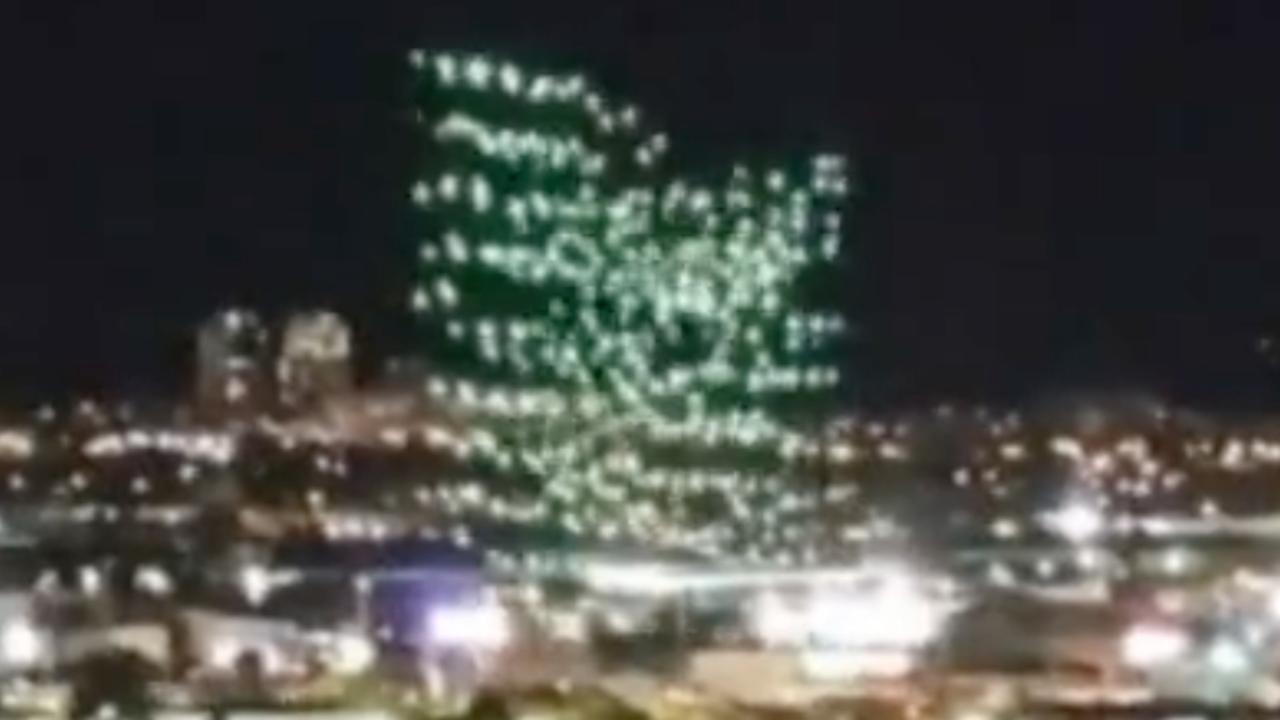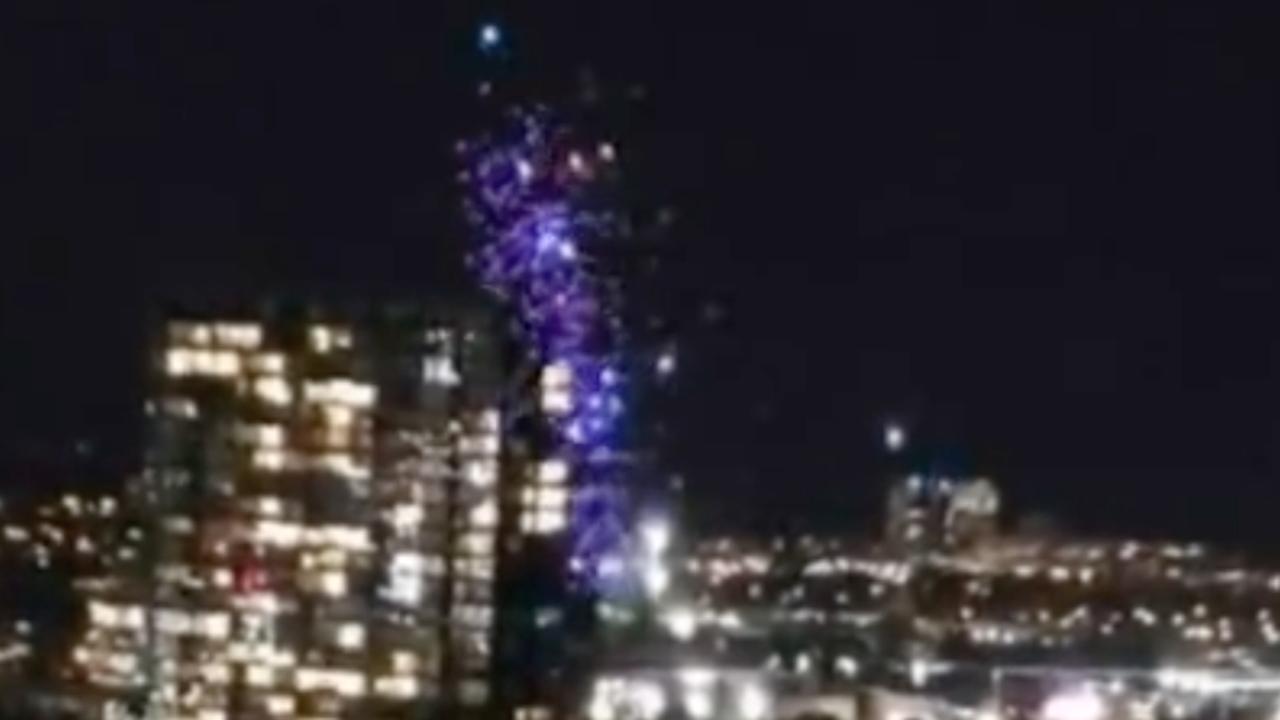Orlando Drone Show Malfunction: The spectacular failure of a recent Orlando drone show captivated audiences and sparked widespread discussion. This incident serves as a critical case study, examining not only the technical aspects of the malfunction but also the safety protocols in place and the public’s reaction to the event. We’ll delve into the specifics of the incident, analyze the contributing factors, and explore the lessons learned for future drone displays.
The recent Orlando drone show malfunction highlighted the inherent technical challenges in these large-scale productions. Considering the potential for similar issues, it’s worth researching best practices, perhaps by looking at the successful examples showcased at a florida drone show , to understand how to mitigate such risks. Ultimately, the Orlando incident underscores the need for rigorous planning and fail-safes to ensure a smooth and safe experience for spectators.
This analysis will cover the event’s details, including the date, time, location, and responsible company, providing a timeline of the malfunction from its onset to resolution. We will examine the nature of the malfunction itself – was it a software glitch, hardware failure, or a combination of factors? Furthermore, we will assess the safety measures implemented and their effectiveness in mitigating potential harm, analyzing public reaction and media coverage to understand the broader impact of this event.
The Orlando Drone Show Malfunction: A Detailed Analysis
On a warm evening in Orlando, Florida (specific date and time to be inserted here), a highly anticipated drone show organized by [Company Name] experienced a significant malfunction. This incident, witnessed by a large audience, provides a valuable case study in the challenges and safety considerations inherent in large-scale drone displays. This analysis will examine the event details, the nature of the malfunction, the safety protocols implemented, public reaction, lessons learned, and comparisons with similar incidents.
Event Details: The Orlando Drone Show Malfunction
The planned drone show featured [Number] drones choreographed to perform a [Description of planned sequence, e.g., dynamic light show depicting a specific theme]. The drones were to move in synchronized formations, creating intricate patterns and visual effects. However, approximately [Time] into the performance, several drones began exhibiting erratic behavior. The intended sequence was significantly disrupted, resulting in a less-than-ideal viewing experience for the audience.
Recent reports highlight a significant issue with a drone show in Orlando, causing considerable disruption to the planned spectacle. Details regarding the specific nature of the malfunction are available via this informative article on the incident: orlando drone show malfunction. Investigations are underway to determine the root cause and prevent similar occurrences in future drone light shows.
The incident underscores the complexities involved in large-scale drone operations.
A timeline of the malfunction might include: [Time]
-Initial signs of erratic movement in a subset of drones; [Time]
-noticeable loss of synchronization; [Time]
-several drones deviated from their programmed flight paths; [Time]
-the show was halted; [Time]
-recovery and assessment began.
Nature of the Malfunction: Identifying the Problem
The malfunction appeared to stem from [Likely cause, e.g., a software glitch affecting flight control systems or a communication breakdown between the control center and the drones]. This resulted in visible effects such as [Description of visual effects, e.g., drones veering off course, colliding with each other, falling to the ground at varying altitudes]. Potential contributing factors could include [Potential contributing factors, e.g., unexpected wind gusts, operator error, or a software bug that was not adequately tested].
Safety and Security Protocols: Assessing the Response, Orlando drone show malfunction
Prior to the show, safety measures likely included [Description of planned safety measures, e.g., pre-flight drone checks, designated flight zones, emergency shutdown protocols, and potentially a safety net or designated drop zone]. During the malfunction, the response involved [Description of actual response, e.g., immediate halting of the show, activation of emergency protocols, and likely communication with emergency services]. Post-incident, an investigation was likely conducted to determine the root cause of the failure.
Reports of an Orlando drone show malfunction surfaced recently, raising concerns about the technical aspects of such large-scale productions. Thankfully, these issues seem to be isolated incidents, as evidenced by the generally positive reviews of the orlando drone show itself. Further investigation into the malfunction is underway to prevent similar problems from affecting future displays.
| Planned Measure | Actual Response |
|---|---|
| Pre-flight drone checks | [Describe actual checks performed] |
| Designated flight zones | [Describe the actual implementation and effectiveness of flight zones] |
| Emergency shutdown protocols | [Describe how emergency protocols were implemented and their effectiveness] |
| Crowd control measures | [Describe crowd control measures taken during and after the malfunction] |
Public Reaction and Media Coverage: Analyzing the Aftermath
Social media platforms were abuzz with comments ranging from disappointment to concern. News outlets reported on the incident, highlighting [Examples of media coverage and perspectives].
- Public concern 1: Safety of the audience given the falling drones.
- Public concern 2: Questions regarding the thoroughness of pre-flight checks and safety protocols.
- Public concern 3: Concerns about the company’s response and communication following the incident.
Lessons Learned and Future Improvements: Proposing Solutions

This incident underscores the need for robust testing and redundancy in drone control systems. Improved safety protocols might include [Suggested improvements, e.g., more rigorous pre-flight checks, backup control systems, enhanced communication protocols, and improved weather monitoring]. Further investment in drone technology, such as fail-safe mechanisms and more resilient communication systems, is crucial.
Illustrative Description of the Malfunction: Visual Representation
Imagine a vibrant display of multicolored drones, initially forming a perfect constellation. Then, like a sudden storm, some drones begin to stray from the formation, their lights flickering erratically. Their movements become chaotic, with some spinning wildly while others descend erratically. The once-harmonious symphony of light transforms into a disjointed and unsettling spectacle. The audience, initially captivated, experiences a shift from awe to concern, a palpable sense of unease spreading as the drones’ erratic behavior becomes increasingly pronounced.
The sounds of the drones, previously a muted hum, become sharper and more dissonant as they lose synchronization.
Comparison with Similar Incidents: Contextualizing the Event

Several similar incidents involving drone malfunctions during public displays have been reported previously. [Describe a few similar incidents and their causes]. These incidents highlight recurring issues such as software glitches, communication failures, and environmental factors. Industry-wide responses have included stricter regulations, improved safety standards, and the development of more reliable drone technology. This Orlando incident serves as a reminder of the ongoing need for vigilance and continuous improvement in the field of drone operation.
The Orlando drone show malfunction highlights the inherent risks associated with large-scale drone displays and underscores the need for robust safety protocols and continuous technological improvement. While the immediate impact was a disruption to the planned show and some public concern, the incident offers valuable insights into improving drone technology, operational procedures, and emergency response plans. By learning from this experience, the drone show industry can strive towards safer and more reliable performances in the future, ensuring both audience safety and the continued enjoyment of this innovative form of entertainment.
FAQ Resource
What type of drones were involved in the Orlando show?
The specific model of drones used needs further investigation and is not available in the provided Artikel.
Were there any injuries reported as a result of the malfunction?
The provided Artikel does not specify whether injuries occurred. This information would need to be sourced from news reports or official statements.
What was the estimated cost of the damage caused by the malfunction?
The financial impact of the malfunction, including damage to drones or other property, is not detailed in the Artikel and requires further investigation.
What legal repercussions, if any, are being considered following the incident?
The Artikel doesn’t address any legal ramifications. Further research into news reports and official statements would be needed to address this question.

